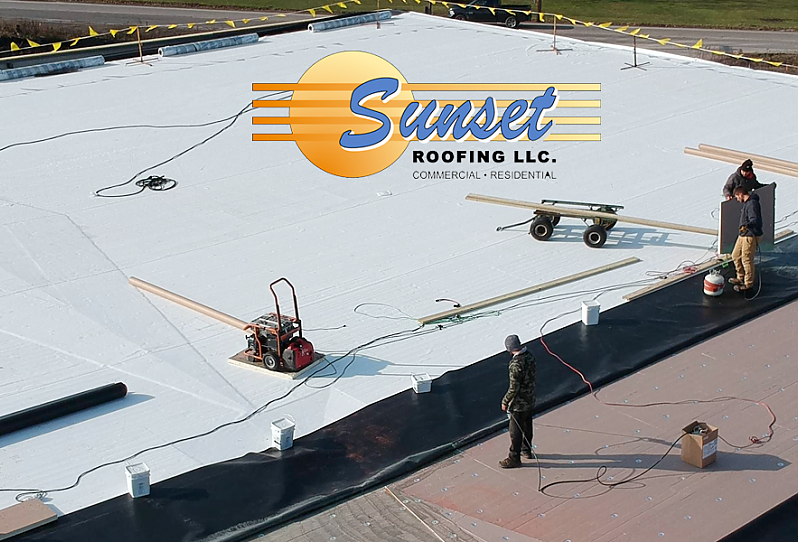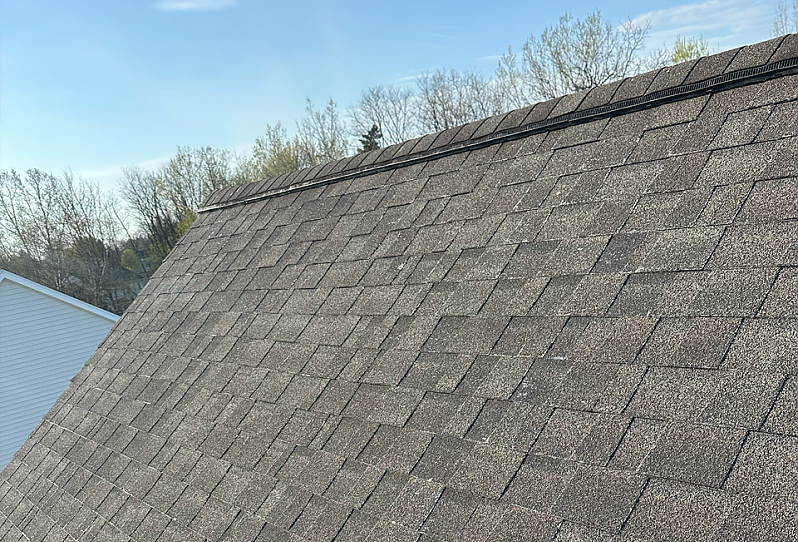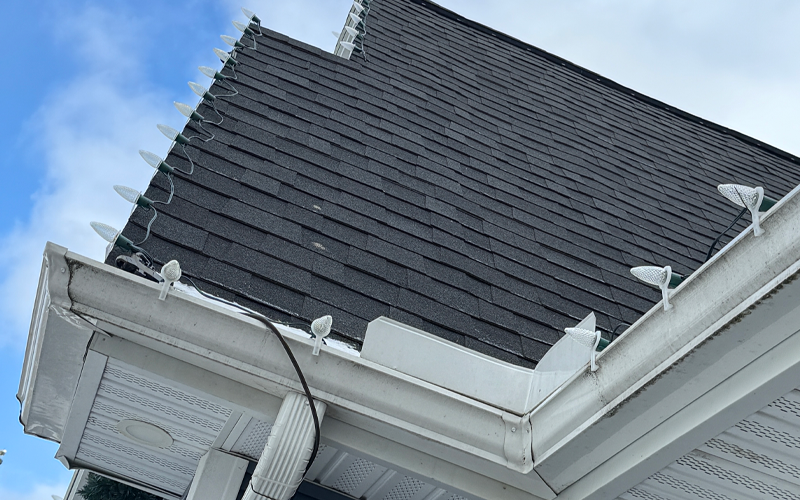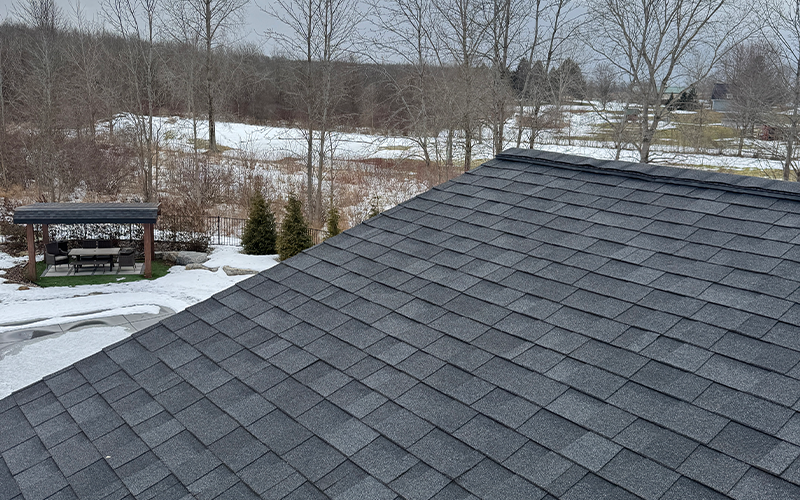Blog
What Steps Should Business Owners Take to Maintain Their Commercial Roofs in Spring?

The Importance of Spring Roof Maintenance for Commercial Buildings
Spring is a critical time for business owners to inspect, maintain, and repair their commercial roofs. The harsh winter conditions in Rochester, NY, can cause damage that may go unnoticed until issues escalate, leading to costly repairs or even premature roof failure.
Proactive maintenance ensures that your commercial roof remains in top condition, protecting your building, employees, and business operations from potential damage. Following a structured spring maintenance plan can help extend the lifespan of your roof, prevent leaks, and improve energy efficiency.
Here are the essential steps every business owner should take to maintain their commercial roof this spring.
1. Schedule a Professional Roof Inspection
The first and most important step in spring roof maintenance is a professional inspection. An expert can identify issues that may not be visible from the ground and provide recommendations for necessary repairs.
Key Areas to Inspect
- Signs of winter damage, including cracks, blistering, or ponding water
- Loose, missing, or deteriorated flashing around vents, skylights, and HVAC units
- Membrane damage on flat roofs, including punctures or separations
- Drainage systems, ensuring there are no blockages or backups
A professional roofing contractor can assess the overall condition of your roof and suggest repairs or preventative maintenance to keep it in peak shape.
Schedule a commercial roof inspection today.
2. Clear Debris and Check for Drainage Issues
Spring brings increased rainfall, and proper drainage is essential to prevent water damage. Flat and low-slope commercial roofs are particularly vulnerable to standing water, which can cause leaks and structural deterioration.
Steps to Ensure Proper Drainage
- Remove leaves, branches, and other debris that accumulated over the winter
- Inspect and clear roof drains, gutters, and downspouts to ensure water flows freely
- Check for ponding water and schedule repairs if drainage issues are found
Regular maintenance of the drainage system reduces the risk of water pooling and prevents long-term damage to roofing materials.
3. Inspect and Repair Roof Flashing and Sealants
Flashing and sealants are key components that prevent leaks around HVAC units, chimneys, vents, and skylights. Over time, extreme temperature changes can cause flashing to loosen or crack, leading to moisture infiltration.
How to Maintain Flashing and Sealants
- Check for cracks, gaps, or rusted flashing that may allow water penetration
- Reapply sealants where necessary to maintain a watertight barrier
- Inspect around HVAC units and other rooftop equipment for wear and tear
Addressing these minor issues now can prevent costly repairs later in the year.
4. Check for Signs of Roof Membrane Damage
For businesses with flat or low-slope commercial roofs, the roofing membrane plays a crucial role in protecting the building from water intrusion. Exposure to winter elements can lead to damage that must be addressed before spring storms.
Signs of Membrane Damage
- Blisters or bubbles forming on the roof’s surface
- Punctures or tears in the membrane material
- Seams separating due to temperature expansion and contraction
If membrane damage is detected, schedule immediate repairs to reinforce the roof and prevent leaks.
Request a commercial roofing inspection now.
5. Evaluate Insulation and Energy Efficiency
Spring is a great time to assess your building’s insulation and ventilation system. Proper insulation helps regulate indoor temperatures, reduce energy costs, and protect against moisture buildup.
Steps to Improve Roof Insulation
- Inspect for wet or damaged insulation, which can reduce energy efficiency
- Consider upgrading to spray foam insulation, which provides better temperature control and moisture resistance
- Ensure ventilation systems are functioning correctly to prevent condensation buildup
Energy-efficient roofing solutions reduce operating costs and create a more comfortable environment for employees and customers.
6. Address Any Winter-Related Damage Immediately
Ignoring small issues in the spring can lead to major roofing problems later in the year. Business owners should address any structural concerns, leaks, or material failures as soon as possible.
Common Winter Roof Damage to Look For
- Ice dam damage, which may have caused hidden leaks
- Cracked or deteriorated roofing materials from freeze-thaw cycles
- Loose or missing fasteners on metal roofs
Spring is the ideal time to make necessary repairs before summer storms arrive.
7. Plan for Preventative Maintenance and Long-Term Roofing Solutions
A well-maintained commercial roof lasts longer and requires fewer unexpected repairs. Business owners should invest in a preventative maintenance plan to keep their roof in optimal condition year-round.
What a Maintenance Plan Should Include
- Routine inspections in spring and fall
- Regular cleaning of drains and rooftop debris
- Proactive repairs to seal leaks and reinforce weak areas
Long-term planning can save thousands in repair costs by preventing premature roof failure.
Protect Your Commercial Roof This Spring
Spring is the best time to assess your commercial roof and make necessary repairs before the busy summer season. A proactive maintenance approach helps business owners:
- Extend the lifespan of their roof
- Prevent costly emergency repairs
- Improve energy efficiency and reduce heating and cooling costs
Sunset Roofing has been serving Rochester businesses since the early 1980s, providing expert commercial roof inspections, maintenance, and replacement services.
Schedule a professional roof inspection today to ensure your business is protected year-round.
‹ Back







